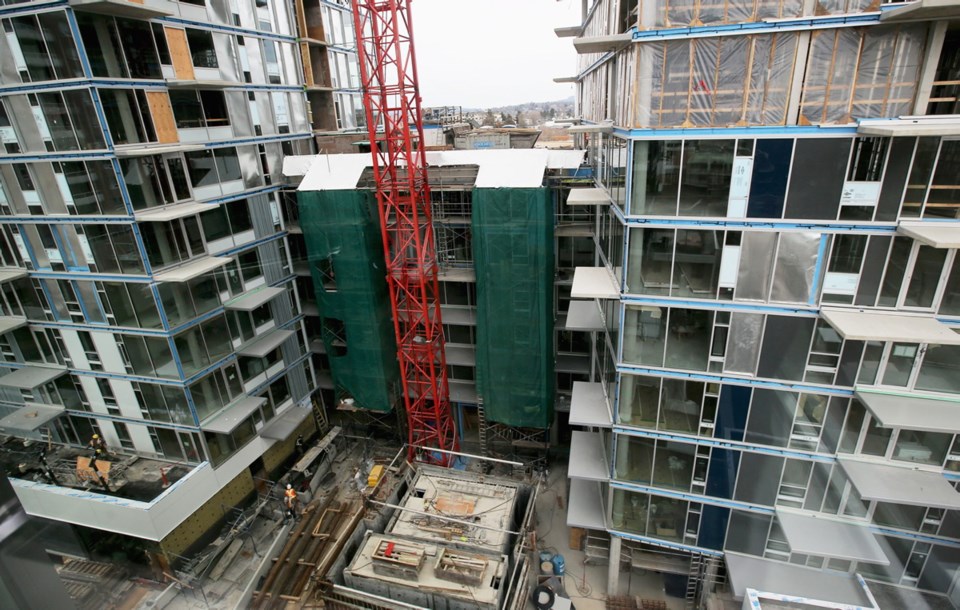Greater Victoria’s home construction industry has bolted from the start line in 2019, but industry experts worry the devil is in the details.
Canada Mortgage and Housing Corporation reported there were 572 new homes started through the first two months of the year, an increase from the 411 started through February 2018. But there are signs the sector is slowing down, said Casey Edge, executive director of the Victoria Residential Homebuilders Association.
“Single-family homes are the canary in the coal mine,” said Edge. “There’s been a 32 per cent decline through February.”
Through the first two months of this year, builders in Greater Victoria started 71 single-family homes, down from 105 during the same period last year. By contrast, 501 multi-family units have been started year-to-date, compared to 306 units in 2018.
Edge said a drop in home sales, the result of few affordable homes and the federal mortgage stress test, are starting to have an effect on builders.
“Where sales go, starts will start to follow,” he said. “There has been a significant decline in sales, [which started] last year. If you can’t sell them, you can’t build them.”
Through the first two months of this year, 750 homes changed hands, according to the Victoria Real Estate Board. Last year at this time, there had been 976.
The new mortgage rules are essentially a stress test to ensure borrowers can withstand a jump in interest rates. They came into effect in the fall of 2016 with the intention of cooling off the 91原创 housing market by reducing demand.
Edge said in market such as Greater Victoria, where demand is high because of growth in the millennial demographic and the second lowest unemployment rate in Canada, the effect has been a boom in multi-family projects.
But even that could change, he said. “A lot of multi-family projects have been in the hopper for more than a year. This year’s starts were already in the pipeline,” he said. “Multi-family construction can get the density, which improves affordability, but there are limits even to that, so we will watch that.”
With the addition of 572 housing units so far this year, there are now 6,102 homes under construction in the region. With skilled trades already at a premium, the sheer weight of that construction could also have an effect on housing starts (a slower pace of building and not enough workers to get new ones started) the rest of this year, said Edge.
Edge expects Greater Victoria will see significantly fewer than the 4,273 starts recorded last year.
“Keep in mind we had more starts in the past couple of years than we have seen since the 1970s,” he said, noting the record was 4,439 in 1976.
The provincial government has forecast a significant drop in housing starts across B.C. over the next three years.
After recording more than 40,000 last year — already a drop from the 43,600 in 2017 — the province expects 34,000 this year and 31,800 in 2020.



